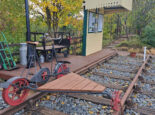A Peterborough wildlife haven

As the countryside starts to fill with the sound of the birds and the bees, it’s a great time to assess what’s buzzing...
That’s exactly what Sacrewell Farm near Wansford has done and it produced some exciting results, using data spanning 40 years as a basis for its findings.
The teams from Sacrewell and Riverford, the organic farmers, who are both based on site, are celebrating an increase in the number of plants, birds and butterflies found on the 550-acre farm, including a couple of new additions. The results were found as part of a new wildlife survey, commissioned by farm owners The William Scott Abbott Trust. In order to gain a good insight into what was found, they used past surveys done in 1974, 1984, and 1994 as a comparator. Among the findings in the butterfly survey was the brown argus, which has never been spotted at Sacrewell, before and the small heath, which has priority conservation status as its numbers have declined severely in the long-term.
Site Operations Manager at Sacrewell Richard Hadfield said: ‘As with all surveys there were some results that really stood out to us. The fact that Sacrewell is helping to buck the trend in some species and numbers are in fact increasing demonstrates that the ecological wellbeing of the land has been maintained and improved over the last 20 years.’
The bird survey revealed species like lapwing and skylark are flourishing at Sacrewell despite declining levels nationally. Reed buntings and yellowhammers that are also on the RSPB conservation concern list have been spotted at Sacrewell for the first time.
A survey of plant life on the farm showed that Sacrewell supports a rich variety of species that have increased and become more widespread across the farm. There has been a big increase in locally significant species as well as plants like night-flowering catchfly (Silene noctiflora) and wild pansy (Viola tricolor) that have suffered widespread decline elsewhere in the UK.
The Trust is an agricultural education charity founded in 1964 to provide practical instruction in farming for everyone who sought it. It started working with Riverford almost a decade ago, when they took over the tenancy of the farm land. Chairman Paul Hutton OBE says the latest set of results has given a new insight into life on the farm.
‘The fact we can see a wider spread of flowers and plants, which are encouraging new species of butterfly and supporting farmland birds is a credit to the hard work and dedication of the Trust and Riverford,’ he added. ‘As a charity, it enables us to educate visitors to the farm and activity centre at Sacrewell on the importance of wildlife on a farm.’
James Negus who helps to run Riverford’s organic farm at Sacrewell is delighted with the results, he said: ‘We took over farming the land here in 2007 with our first crops two years later. As organic farmers we work with nature to develop healthy, fertile soil avoiding the use of chemical fertilisers and pesticides that can be harmful to wildlife. Our customers seem to enjoy the results and we now deliver more than 7,000 veg boxes a week in the area. We’ll continue to enhance the land for wildlife with more hedgerows, provide wet grassland areas for birds, and maintain a range for habitats for mammals and insects.’
The results have also helped Sacrewell and Riverford to improve upon their educational interpretation on site.
About Sacrewell
Sacrewell is open from 9.30am – 5pm every day and there are a number of self-led walks and rambles that are free to explore. Riverford is running a series of free farm walks at 5pm on the last Wednesday of each month from May-September so people can see the wildlife first hand. To book your place visit www.riverford.co.uk/pet/walks-sacrewell















